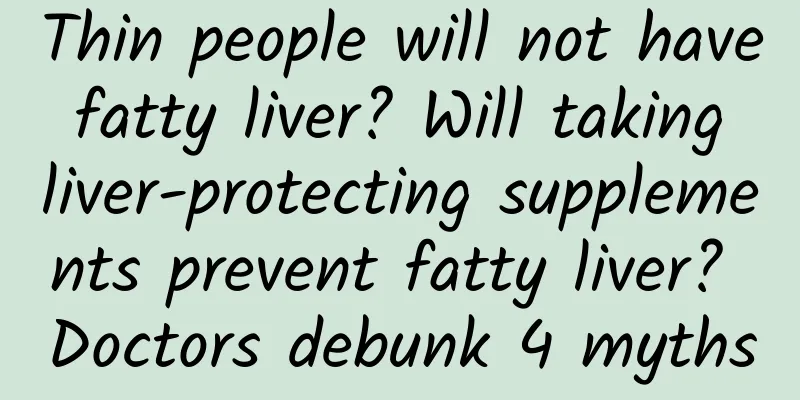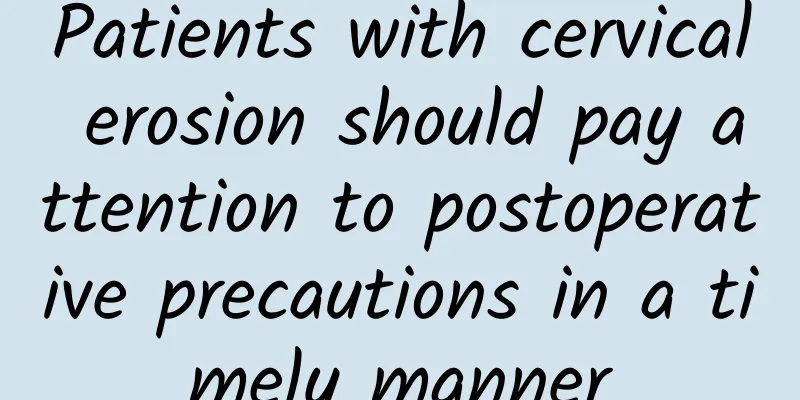What are the reasons why menopause is difficult to cure?

|
Menopause is something that every female friend will experience, but many female friends are facing the risk of premature menopause, which causes them unbearable pain. How to cure it is a big problem. So, what are the reasons why menopause is difficult to cure? Below, we will introduce the reasons why menopause is difficult to cure. 1. Age of menopause The age of menopause reflects the reproductive lifespan of the ovaries. Cell senescence is the result of menopause. Factors that affect the age of menopause include heredity, nutrition, obesity, altitude of the living area, smoking, etc. 2. The impact of genetic factors on menopausal women The DNA sequence and its variation in the human body reflect the evolution of human beings. Studying DNA sequence variation (i.e. polymorphisms) in different populations and individuals helps us understand human physiological changes, the occurrence and development of diseases, and the response to drug treatment. DNA, which carries the genetic information of the human body, is composed of four different bases. The human genome has about 3.3 billion base pairs, and their order has been basically determined. The order of bases in the genomes of different people is mostly the same, but there are also very small differences, which are mainly reflected in the different base arrangements at individual positions of DNA. This genetic variation is called single nucleotide polymorphism (SNP), see Figure 1. There are about 10 million SNPs in the human genome. The reason why different people have different susceptibility to the same disease and sometimes have different reactions to the same drug is related to the differences in SNPs. Similarly, SNPs also affect the differences in various physiological conditions and disease occurrence in menopausal women to varying degrees. Many gene polymorphisms are associated with the timing of menopause and the onset of certain postmenopausal diseases. Very early menopause is often accompanied by a decrease in estrogen levels, which has an important impact on postmenopausal health. Early menopause is a high risk factor for cardiovascular disease, osteoporosis and ovarian tumors, and increases mortality. Therefore, from a clinical point of view, it is very important to determine the factors that affect the age of menopause. More and more studies have found that certain gene polymorphisms are associated with the occurrence of menopause and postmenopausal diseases. (1) Estrogen receptor (ER) gene polymorphism: ① Structure and function of estrogen receptor (ER). ② Polymorphism of ER gene. ③ Relationship between ER gene polymorphism and menopause. ④ Relationship between ER gene polymorphism and postmenopausal bone mineral density. ⑤ ER gene polymorphism and postmenopausal hormone replacement therapy (HRT). For postmenopausal women receiving HRT, their ER gene polymorphism affects the level of high-density lipoprotein (HDL), thus affecting the dose-effect of HRT. In summary, estrogen receptor gene polymorphism affects menopause time and bone metabolism at different levels and plays a role in HRT treatment. If clinicians can predict the risk of postmenopausal osteoporosis and the response to HRT treatment by testing ER genotype, it will play an important role in the early prevention and treatment of osteoporosis and the formulation of personalized HRT treatment plans. (2) Vitamin D receptor gene polymorphism: ① Structure and function of vitamin D receptor. ② Polymorphism of VDR gene. ③ Relationship between VDR polymorphism and postmenopausal bone mineral density and osteoporosis. (3) Other gene polymorphisms: ① Calcitonin receptor (CTR) gene polymorphism. ② Type I collagen (COLIAI) gene polymorphism: COLIAI is associated with bone mass and osteoporotic fractures. ③ Interleukin-6 (IL-6) gene polymorphism. ④ Transforming growth factor β gene Transforming growth factor β (TGF-β) gene polymorphism. ⑤ CYP17 and CYP19 genes. (4) Detection of gene polymorphism: The study of gene polymorphism is inseparable from the detection of gene polymorphism sites. ① Restriction fragment length polymorphism (RFLP). ② Short tandem repeat sequence. ③ Amplified fragment length polymorphism. ④ Single strand conformation polymorphism (SSCP). ⑤ Gene chip and SNP map. 3. Ovarian aging (1) Follicle reduction and ovarian morphological aging: There are about 700,000 to 2 million follicles in the ovaries at birth. There are about 400,000 follicles during puberty. A very small number of follicles may remain at menopause. There are two pathways leading to follicle reduction: ovulation and atresia. From puberty to menopause, only 400 follicles can mature and ovulate, and the vast majority of follicles are naturally atretic. The mechanism is currently unknown, and whether it is due to cell apoptosis remains to be studied. (2) Decline of ovarian function: ① Reproductive function: Women's fertility begins to decline at the age of 30 to 35, and declines significantly when they are close to 40. From regular menstruation to menopause, there is usually a period of irregular menstruation. During this period, the follicles mature irregularly, with or without ovulation, and the cycle may be normal, long, short, or completely unpredictable. Therefore, the length of the cycle and its changes can also be used to reflect ovarian function. When there is no follicle development and menopause, reproductive function ends. ② Endocrine function: As the ovarian reproductive function declines, the endocrine function also declines, which is manifested in the changes in the sex hormones synthesized and secreted during follicular development, mainly estrogen and progesterone. The first is the decline of progesterone. Around the age of 40, the degree of follicular development is insufficient, which may be manifested as a relative deficiency of progesterone (P). The degree of insufficient follicular development increases, which can lead to anovulation and absolute progesterone deficiency. Subsequently, with the decrease in the number of follicles and insufficient development, the total amount of estrogen produced and secreted, mainly E2 (estradiol), gradually decreases; during the menopausal transition period, when progesterone is insufficient due to anovulation, the E2 generated by follicular development may not be lacking. If the number of follicles is large, the degree is high, or it continues, E2 may even be relatively excessive. After menopause, follicles do not develop and basically do not produce E2. Under the action of increased Gn, the interstitial secretion of testosterone (T) increases. Another type of hormone secreted by the ovaries - peptide hormones, such as inhibin, gradually decreases, and its decline precedes E2. |
<<: Experts tell you whether menopause can be cured
>>: Delayed menopause should alert ovarian tumors
Recommend
How can women prevent cervical erosion? 5 causes of mild cervical erosion
The grading method of cervical erosion is based o...
Beware of the autumn heat and stay away from heat stroke! Nutritionist recommends: 8 foods that clear heat and relieve summer heat
Although summer has passed, the autumn heat has c...
Why can’t I lose weight? Experts share 6 weight loss diet tips to keep slim and avoid gaining weight again
The secret of staying slim and not gaining weight...
Classification of causes of pelvic effusion
What is the cause of pelvic effusion? This is a q...
Let's learn more about the causes of uterine fibroids
Uterine fibroids are the most common disease amon...
Chinese medicine tea therapy for amenorrhea
Amenorrhea is a disease that is difficult to treat...
Clinical examination methods of cervical hypertrophy
It is very important for patients to check for ce...
Characteristics of multiple uterine fibroids
Uterine fibroids are often multiple, and differen...
6 groups of people who are prone to dysmenorrhea
According to the relevant factors causing dysmeno...
Purple power! New discovery: Drinking beetroot juice can make people run faster
The "Purple Power" is coming! Beetroot,...
Lily medicinal cuisine is popular
Lily is a perennial bulbous flower, and its culti...
Introduction to the causes of hyperprolactinemia
Hyperprolactinemia is a disease caused by abnorma...
Experts introduce the specific causes of adnexitis
What are the causes of adnexitis? Experts say tha...
Nursing measures for pelvic inflammatory disease
What are the care measures and prevention methods...
How to prevent endometrial thickening after menopause
It is still very important to prevent postmenopau...









